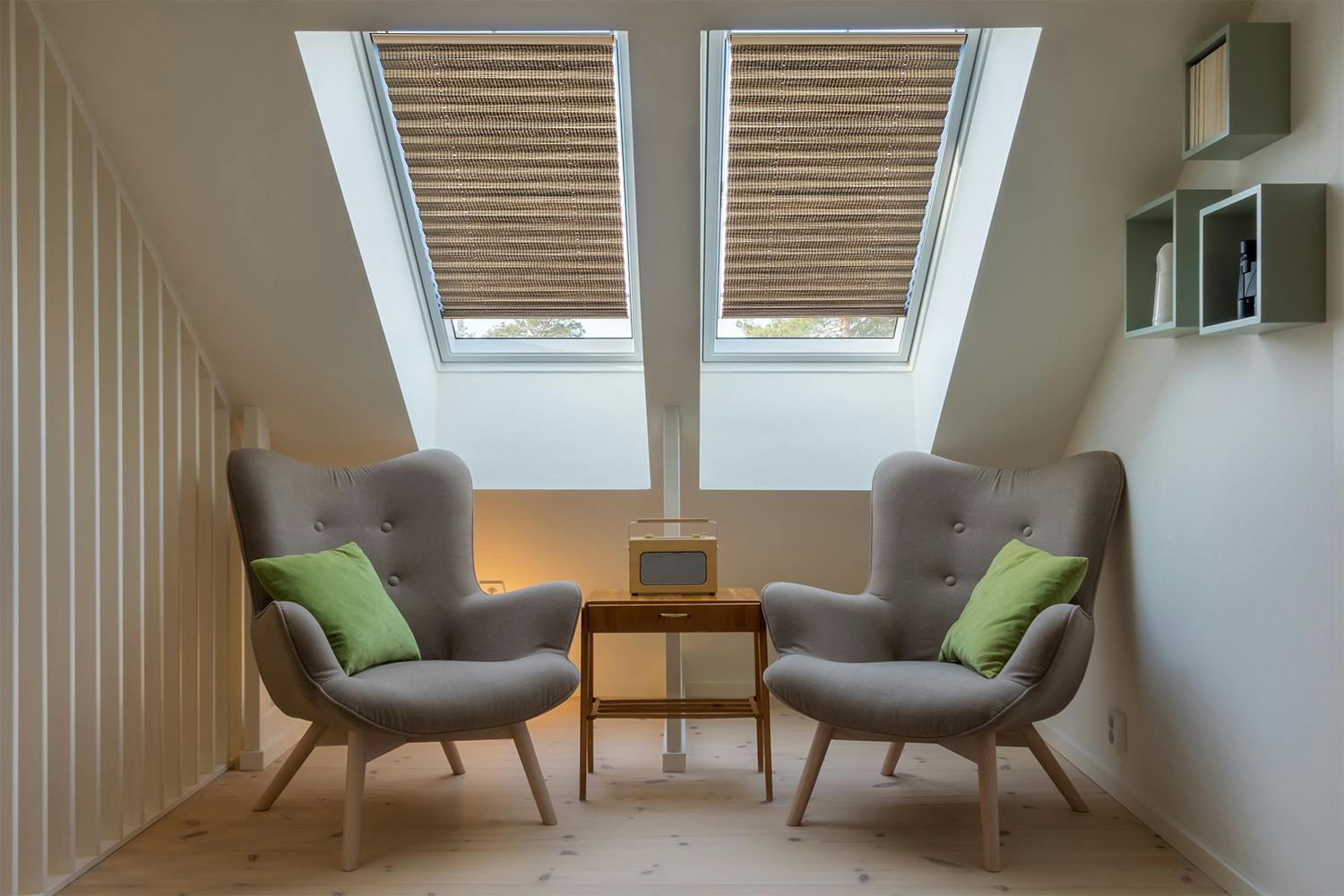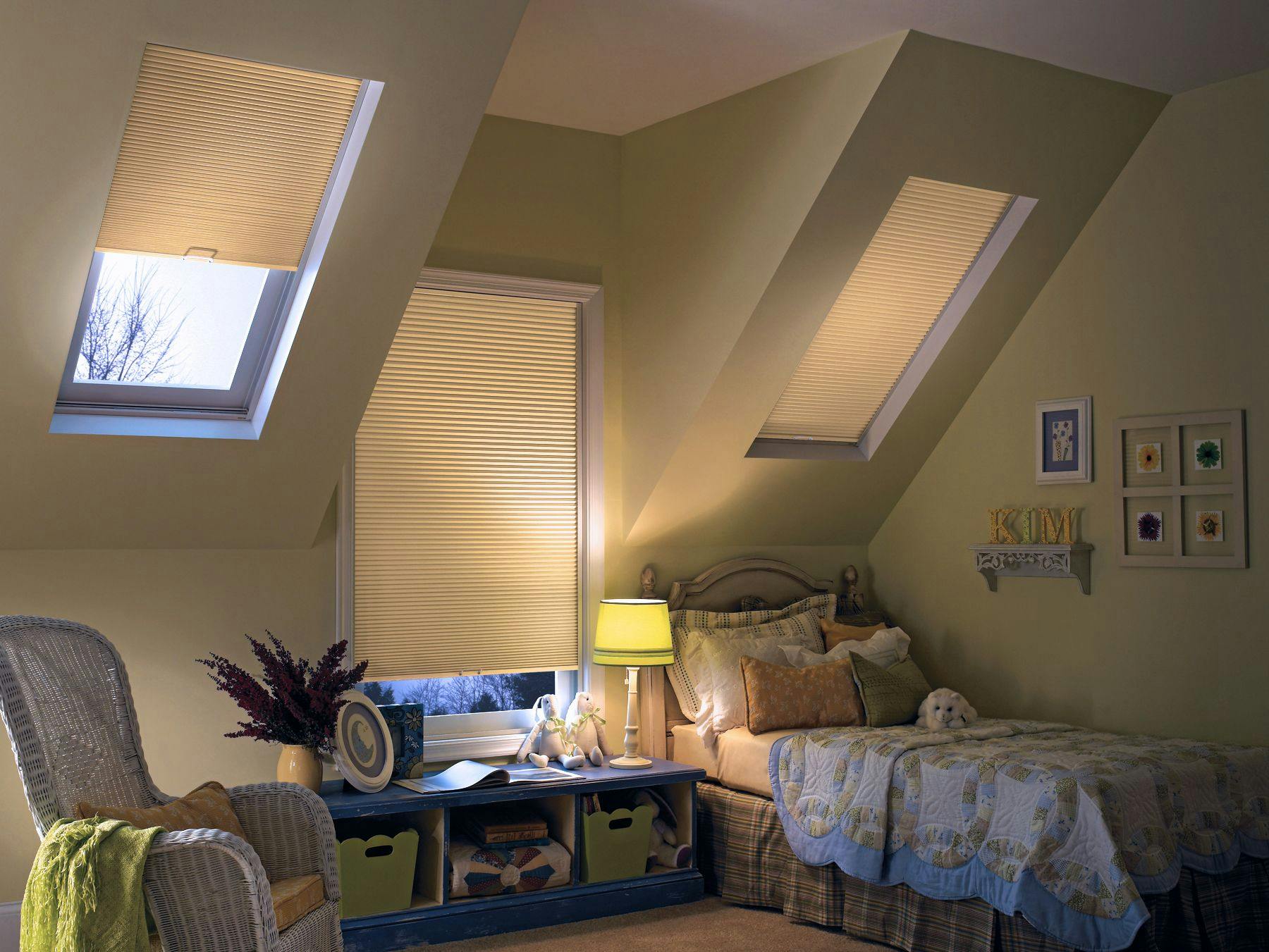

The unusual shape of skylights makes them tricky to cover. Here's what you need to know about how to cover skylights.
Skylights are an eye-catching detail that lets in plenty of gorgeous, natural light. However, what do you do when you want a little more privacy and light control? You don't have to choose between stunning skylights and gorgeous window treatments. It's actually possible to find beautiful window treatments that work well with skylights. Check out our guide to find out how to cover a skylight.
How to Tell if Your Skylight Windows Need Covering
Start by deciding which skylights actually need a window treatment. Since the average pedestrian on a sidewalk can't look in through your skylight windows, you might consider leaving them uncovered. However, most skylight styles can still benefit from a good window treatment.
Though many people love skylights for their natural light, all that brightness can be a problem. A window treatment keeps you from waking up to sunshine at 6 a.m. Shades also block glare, so you can watch your favorite television show. So, if your skylight is in a bedroom, an office, or a living room, shades are almost always essential. In rare cases, skylight window treatments are also necessary for privacy. If you live in a one-story home surrounded by tall houses, your neighbors might be able to see through your skylight. Another reason to consider skylight blinds or shades is for insulation. As the sun shines through a skylight, it will heat up your home. Blocking this light with a shade can lower your electric bills. And if your skylight is drafty, a tightly fitting cellular shade can also lower heating costs in winter.
Find the Right Window Treatment Size for Your Skylights

Light Filtering Skylight Cellular Shades
Since some window treatments work best with certain window sizes, knowing your skylight size helps you find the right options. Skylights come in some unusual shapes and sizes, so it's essential to have the right measurements. Follow these basic steps to find the size of your skylight.
- Use appropriate safety gear when accessing skylights. You may need someone to hold a ladder for you.
- Get a steel tape measure for more accurate measurements.
- Start by measuring the depth of your window. Most window treatments need at least 1.5 inches of space to install the brackets.
- Measure the height of the window across the top, middle, and bottom. Avoid rounding, and measure to the closest one-eighth of an inch instead.
- Measure the width across the top, middle, and bottom. If your window height is more than 96 inches, measure every 48 inches instead.
- Use the shortest height and the narrowest width of your window measurements when ordering.
Depending on the type of window you have, finding accurate measurements can be tricky. Be sure to check out our skylight measurement guide, and contact our help team if you have any questions.
The Best Styles for Covering Skylights

Light Filtering Skylight Cellular Shades
When you shop for window treatments for skylights, any window covering needs to meet these conditions:
- Be adjustable, so you can darken the room or let in light as needed
- Have a sleek, flat profile that won't distract from your architectural details
- Use a mounting style compatible with horizontal or angled windows
- Come in colors that match your walls or home décor
- Have an operating system that works for hard-to-reach windows
Ultimately, there are three classic window treatment styles that are ideal for skylights. Pleated skylight shades are a type of window treatment mounted on sidetracks. You can use a handle or pole to raise and lower the shades as needed. With the option of adding a light-blocking liner, these are an ideal option for bedrooms and nurseries. Skylight mini blinds are another great choice. Skylight blinds include a tension rail along the bottom to help hold the blinds against the skylight. The benefit of using blinds for a skylight is that you can angle the slats. This lets you get privacy while still blocking glare. A final style to consider is blackout cellular shades. These skylight shades slide back and forth on aluminum side channels. Their unique, honeycomb-shaped design allows you to add insulation and privacy to your skylight. This is one of the only styles that lets you pick from inside and outside mounts, so it is compatible with even very shallow skylight windows.
Make Your Skylight Shades More Convenient With These Upgrades
Even basic skylight blinds and shades are very helpful. However, don't forget that you also have the option of upgrades. Since skylights tend to be in hard-to-reach places, upgrades make it far easier to open and close your shades. An easy and affordable upgrade is the skypole. This helpful attachment lets you raise and lower your window treatments from a distance. When you want to adjust light levels, the pole quickly changes your blind positions. And when you're not using it, it's easy to store discreetly. Though it can take a little extra time to pick out skylight window treatments, the end result is worth it. The right skylight shade helps you find the best amount of light and privacy for your home.
